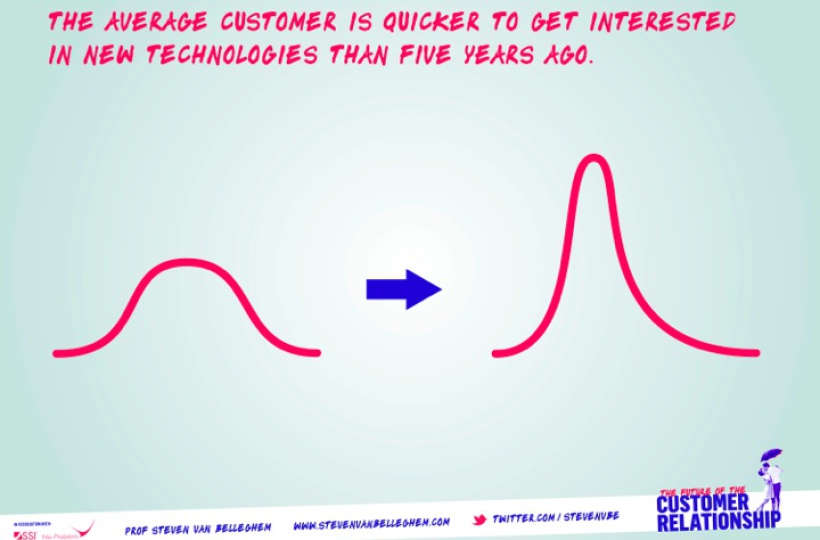Adoption of new technologies âon speedâ

Check out this short video to see the key results:
More than ever, people are aware of what’s available
50% of the general public know about Google Glass. 54% are familiar with the concept of a smartwatch. 33% had heard of Nike’s Fuelband. These are extremely high figures for new products and technologies. Never before has the public been so aware of the new possibilities that are coming their way.
Apart from awareness, the intention to actually buy all these novelties is very high. I remember studies from the early 90s where respondents were asked about their intention to buy a mobile phone someday. The most popular answer was a firm ‘No!’. Ten years later the mood had changed completely. That’s how it usually went with new concepts: the average Joe or the so-called ‘early majority’ failed to see the point of the proposed new technology. Reactions today are very different: for instance, 66% say they are interested in buying a smart TV one day. One in two are actually looking forward to the introduction of smart cars. Smart shoes and refrigerators are slightly lower down on the wish list but the idea of a smart thermostat is very popular.
Technology is cool!
This could be explained by the increasing popularity of technology, which used to be for nerds. Today, the cool guys drive Teslas and can’t wait to try out their latest smartphone. Phenomena such as Uber and AirBnB make the news faster than ever before whereas a few years ago, this type of trendy organization stayed below the radar. Today this type of phenomenon is the subject of newspaper articles and TV programs. Once again, Silicon Valley is hailed as a kind of technological Lourdes worthy of pilgrimage. The impact of technology has never been greater and this explains the unprecedented interest. This evolution boosts consumer awareness and seduces that consumer into buying the innovative product.
The adoption curve ‘on speed’
I’m ashamed to tell my children that we owned the same telephone for the first 18 years of my life. You know what I mean, the kind with a cable that ran through the wall… Today, a mobile phone has become one of many Fast-Moving Consumer Goods. The average consumer replaces his smartphone every 18 months. The tablet was launched in 2009. In just five years’ time this product has changed the world. Things are going fast. Very fast.
The classic Rogers adoption curve probably still exists although its upward or downward tilt is probably slightly more pronounced than before. Life is faster nowadays and that includes new technologies. Also, products often become obsolete faster than before.
If you want to see all results of this study, check out this slidedeck: